Sergachev, Juolevi among top defenseman in 2016 NHL draft
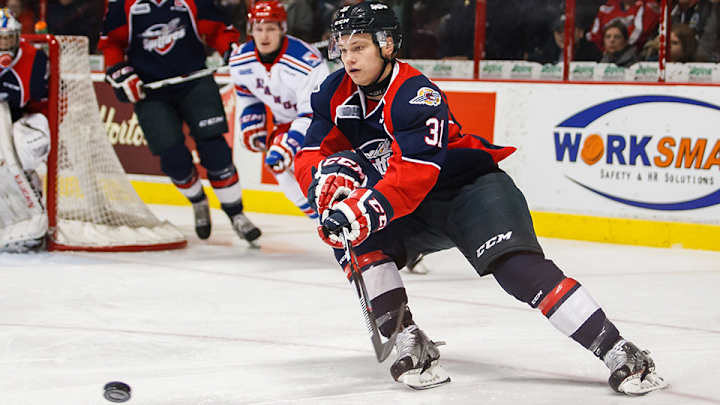
Your teams. Your favorite writers. Wherever you want them. Personalize SI with our new App. Install on iOS (iOS or Android)
There's not much debate surrounding the top forwards available in the 2016 NHL draft. American center Auston Matthews is the clear No. 1, with Finland’s Patrik Laine and Jesse Puljujarvi close behind. Given a choice, most scouts would agree that U.S.-born Matthew Tkachuk is the clear No. 4.
But it's a different story when it comes to defenseman. In a class loaded with high-end talent, there's little consensus about which blueliner will be the first off the board.
That's not what we're not looking at here (we'll address the likely order of selection in our annual mock draft). Instead, this is our ranking of which players we think will be the top-performing pros.
Will your team land one of them? Keep this list handy when the draft kicks off June 24 in Buffalo.
1. Mikhail Sergachev, Windsor Spitfires (OHL)
The 6'2", 206-pound left-shooting, right defender ranked eighth on Central Scouting's final tally of North American skaters. He won't last that long.
“Someone's going to make a move [up in the draft] to get him,” one scout said. “He has the highest ceiling of [any blueliner] in this year's class.”
Sergachev is a one-man breakout, mobile and poised with the puck. He has a heavy, accurate shot that has many projecting him as a future power-play quarterback and brings a nasty, physical edge.
This past season, he became just the second rookie in OHL history to be honored as the league's top defenseman.
“He has all the tools to become a top [pairing] defenseman [in the NHL],” another scout said. “He's a very well-rounded young man.”
• Ranking every NHL team's best active drafted player
2. Olli Juolevi, London Knights (OHL)
Juolevi might be the most well-rounded defender up for grabs. He's coming off a remarkable season in which he played a key role in Finland's World Junior championship, followed by London's Memorial Cup victory.
“For my money, he's the best puck mover and power-play option of them all,” a scout said. “Strong skater with elite offensive instincts,” said another.
He struggles at times in his own end, but physical maturity may be all that separates the 6'2", 185-pound left shot from addressing that.
“There's almost no downside with Juolevi,” the first scout said. “You know he's going to play. With his tools, the upside is considerable.”
• Full draft order set; Leafs Sabres look to load up
3. Jake Bean, Calgary Hitmen (WHL)
Here's your pure next-gen defender. Bean is custom built to play the possession game.
“He has outstanding vision [and] reads the play as well as anyone in this draft,” a scout offered. “He can lead the rush and power the attack with his passing or by taking the shot himself.”
Bean's shot might be his killer quality. He gets the puck off his stick quickly and accurately and, like Dallas's John Klingberg, has a knack for getting it through bodies and onto the net. That was the key to his Canadian Hockey League-leading 24 goals this season.
He's never going to be a bruiser (he's just 6-feet,175 pounds), but he's willing to initiate contact and he has the awareness to be an effective presence in the defensive zone.
• The face of the NHL’s future: Our 2016 All-World Juniors team
4. Dante Fabbro, Penticton Vees (BCHL)
At 6-feet, 189 pounds, Fabbro lacks ideal size, but scouts rave about his refined, pro-style game.
“He's a two-way defender with a high offensive upside,” one said. “He's an athletic skater ... who processes the game at a high level ... and can bring the offense.”
Fabbro had 14 goals and 67 points in just 45 games this year. Granted it was in a lower developmental league, but proved himself against the big kids with Team Canada at the U-18s. “He showed a lot of poise,” said one scout in attendance. “He's not physical, but he reads the play well and has a good stick.” He's also a right shot, which could enhance his value.
5. Jakob Chychrun, Sarnia Sting (OHL)
It's not that Chychrun, the son of former NHLer Jeff Chychrun, has under-performed necessarily. But a player many believed would contend for the top pick simply didn't do enough in his draft year to keep pace with others in his class.
• Q&A: Get to know top 2016 NHL Draft prospect Auston Matthews
The 6'2", 215-pound blueliner put up decent numbers (11-38-49) but rarely seemed to rise above the moment. That has some concerned that he may have plateaued.
“The tools are there for him to become a dominant defenseman,” one scout said. “The size, the skating, the hockey sense, it's all there. But the delivery-to-hype wasn't there, you know? I don't think he's the player we thought he'd be. He might become that guy, but he's not there yet.”
It wouldn't be surprising to see Chychrun drop out of the top 10.
GALLERY: NHL’s Teen Phenoms
NHL Teen Phenoms
Bobby Orr, 18, 1966-67
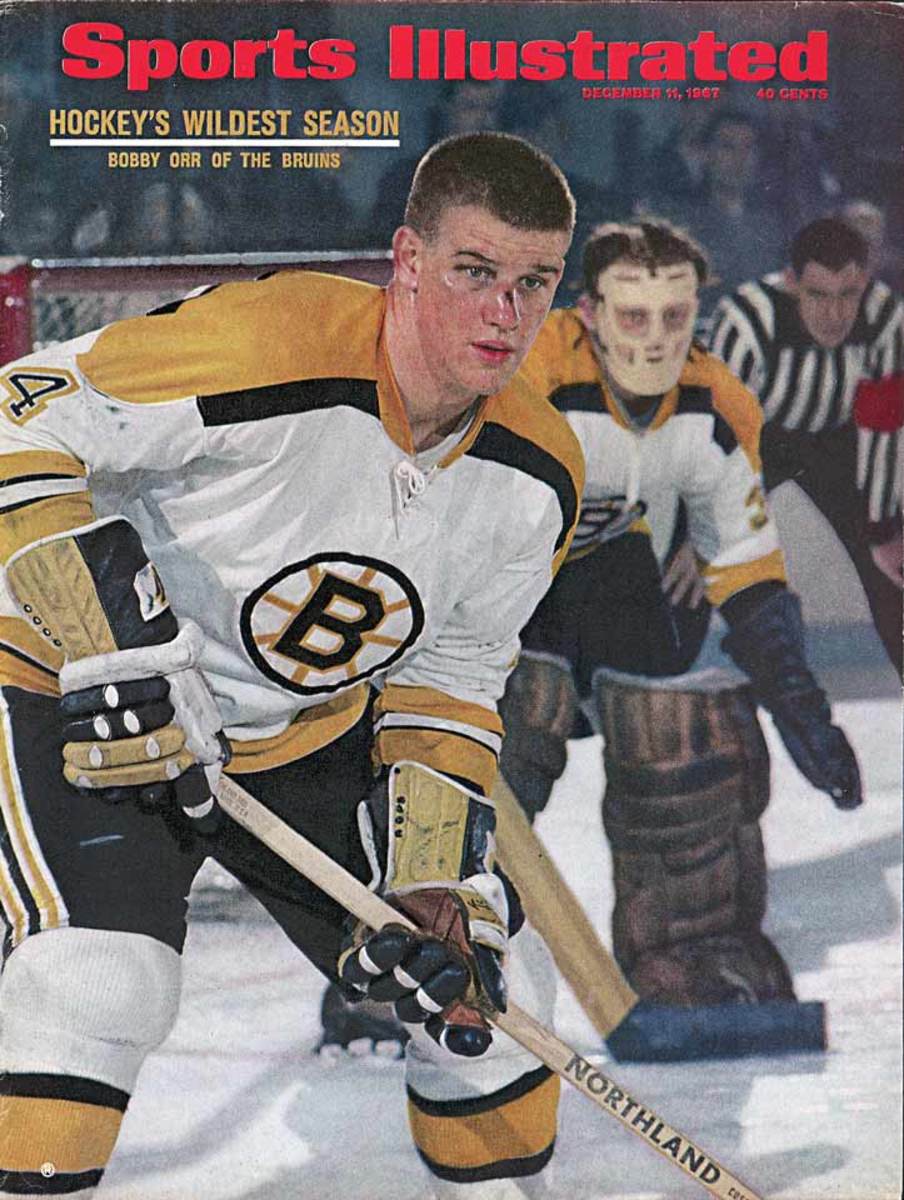
The kid was as good as expected (13-28-41 in 61 games), winning the Calder Trophy and launching a blue line revolution with his skating, passing, dynamic rushes and solid defense. Norris winner Harry Howell prophetically said, “I might as well enjoy it now because I expect it’s going to belong to Bobby Orr from now on.” He was right. Orr won it in each of the next eight seasons.
Wayne Gretzky, 19, 1979-80
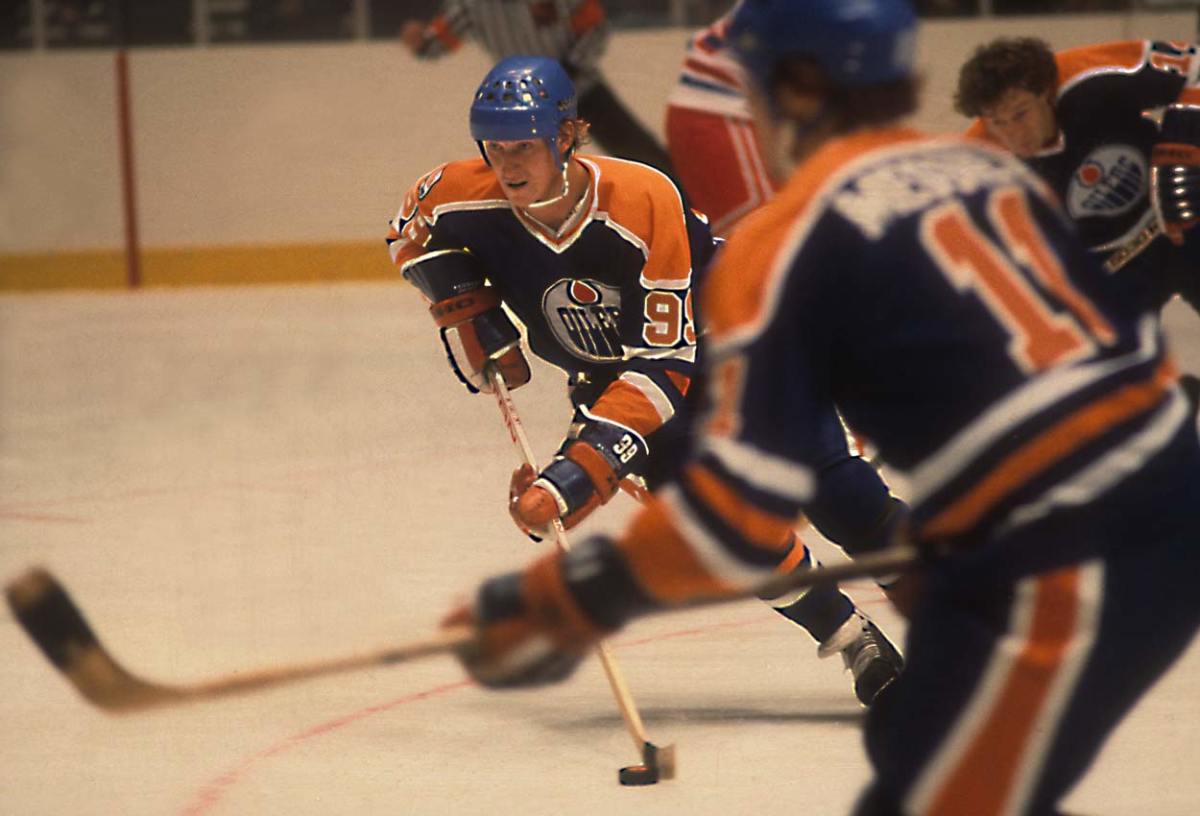
In his first NHL season, the Great One scored 51 goals and led the league with 86 assists and 137 points, good for the Hart and Lady Byng trophies, but not the Calder. His previous season in the rival WHA made him ineligible for rookie of the year, which went to another 19-year-old.
Ray Bourque, 19, 1979-80
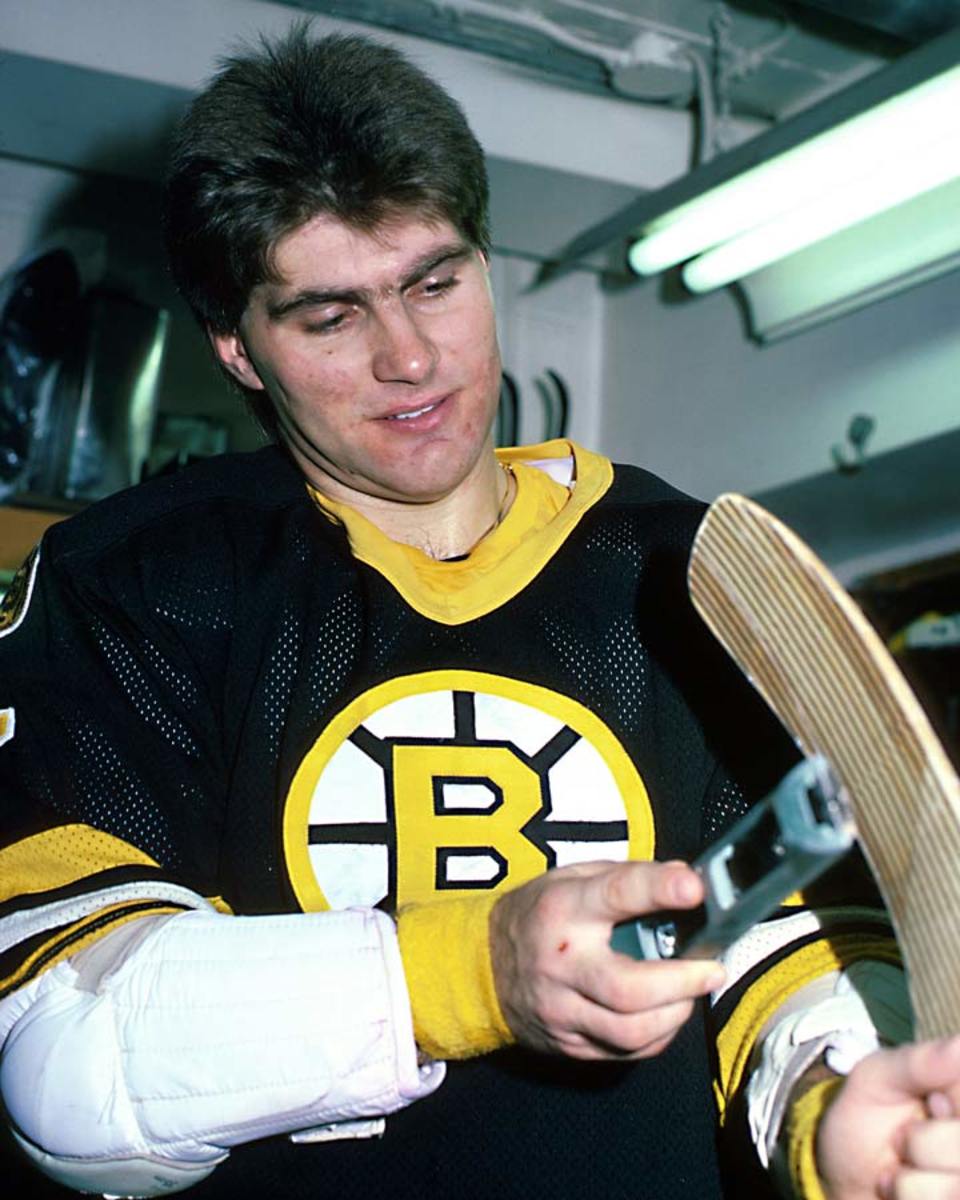
The eighth pick in the ’79 draft launched his Hall of Fame career by going 17-48-65 with a dazzling +52 to earn Norris votes, a first team NHL All-Star nod and the distinction of being the answer to a trivia question: Who won the Calder during Wayne Gretzky’s first season in the NHL?
Dale Hawerchuk, 18, 1981-82
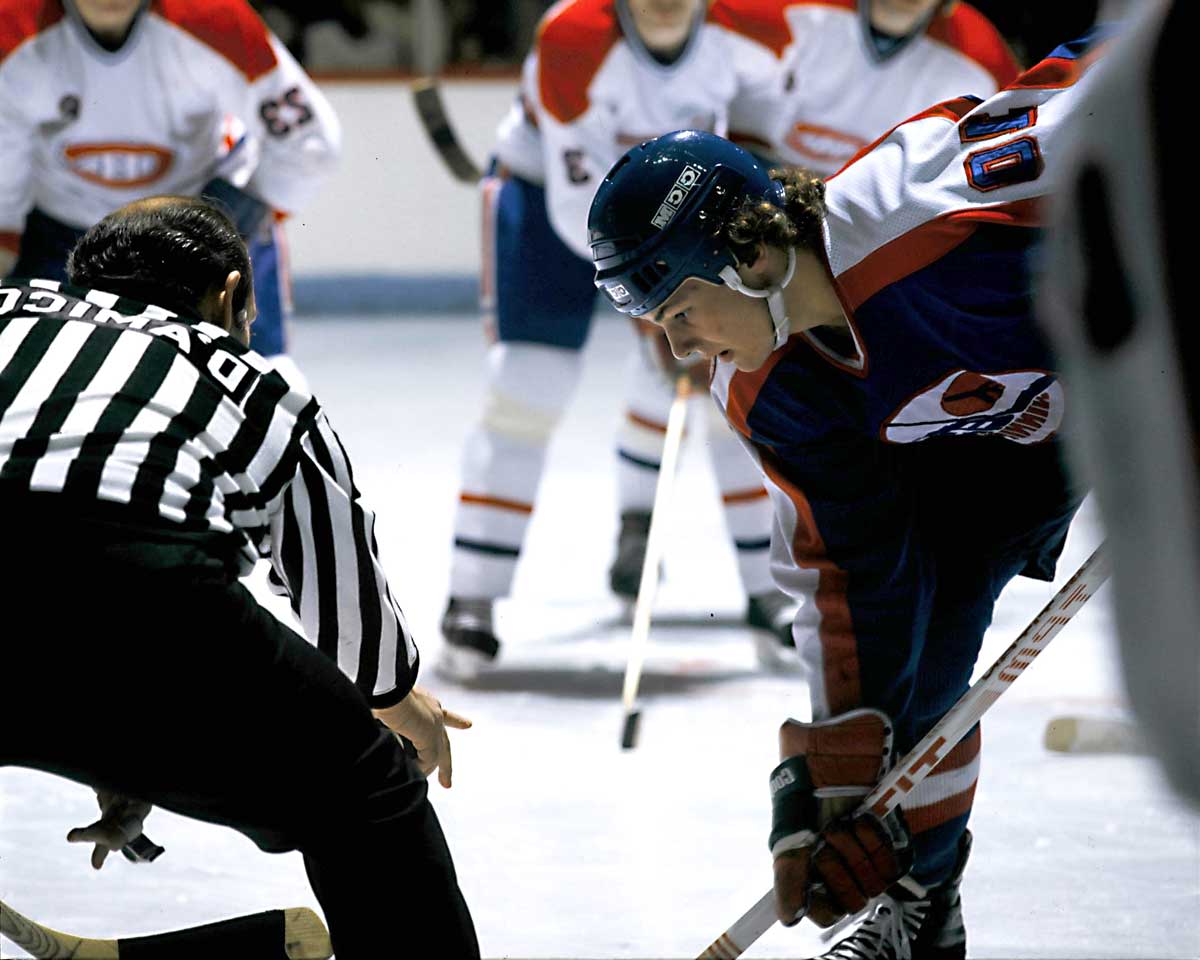
The Canadian Major Junior Player of the Year was the first pick in the ’81 NHL draft after his 81-goal, 183-point season in the QMJHL. An agile, quick playmaker and scorer, Hawerchuk won the Calder by becoming the first NHL rookie to post a 40-goal, 100-point campaign. He went on to become a Hall of Famer.
Steve Yzerman, 18, 19883-84
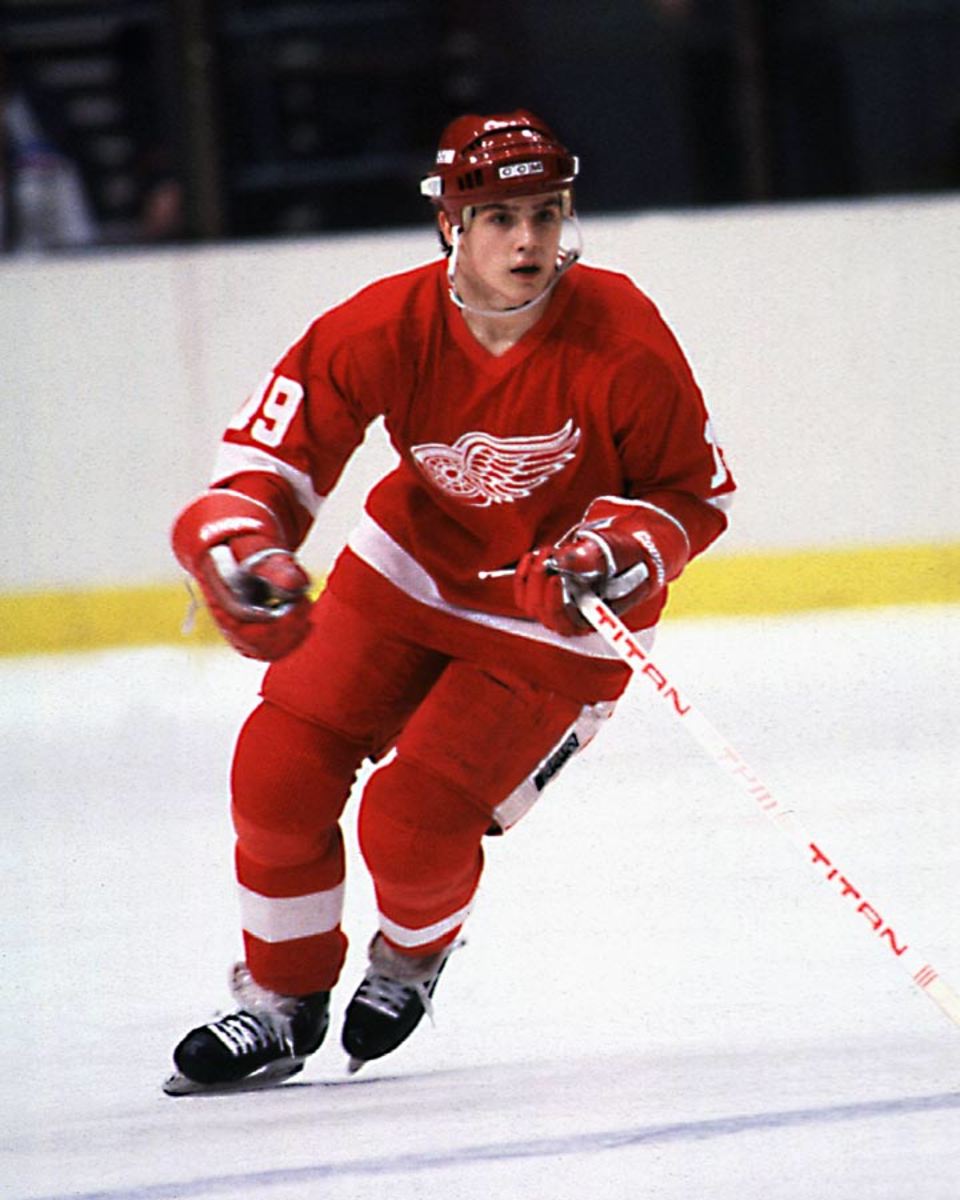
The fourth pick of ‘83—after Brian Lawton (North Stars), Sylvain Turgeon (Whalers) and Pat LaFontaine (Islanders)—Yzerman was undersized, highly skilled and gritty. He had to win a job in training camp, but stuck and went 39-48-87 in 80 games, finishing second in the Calder race behind Sabres goalie Tom Barrasso.
Tom Barrasso, 18, 1983-84
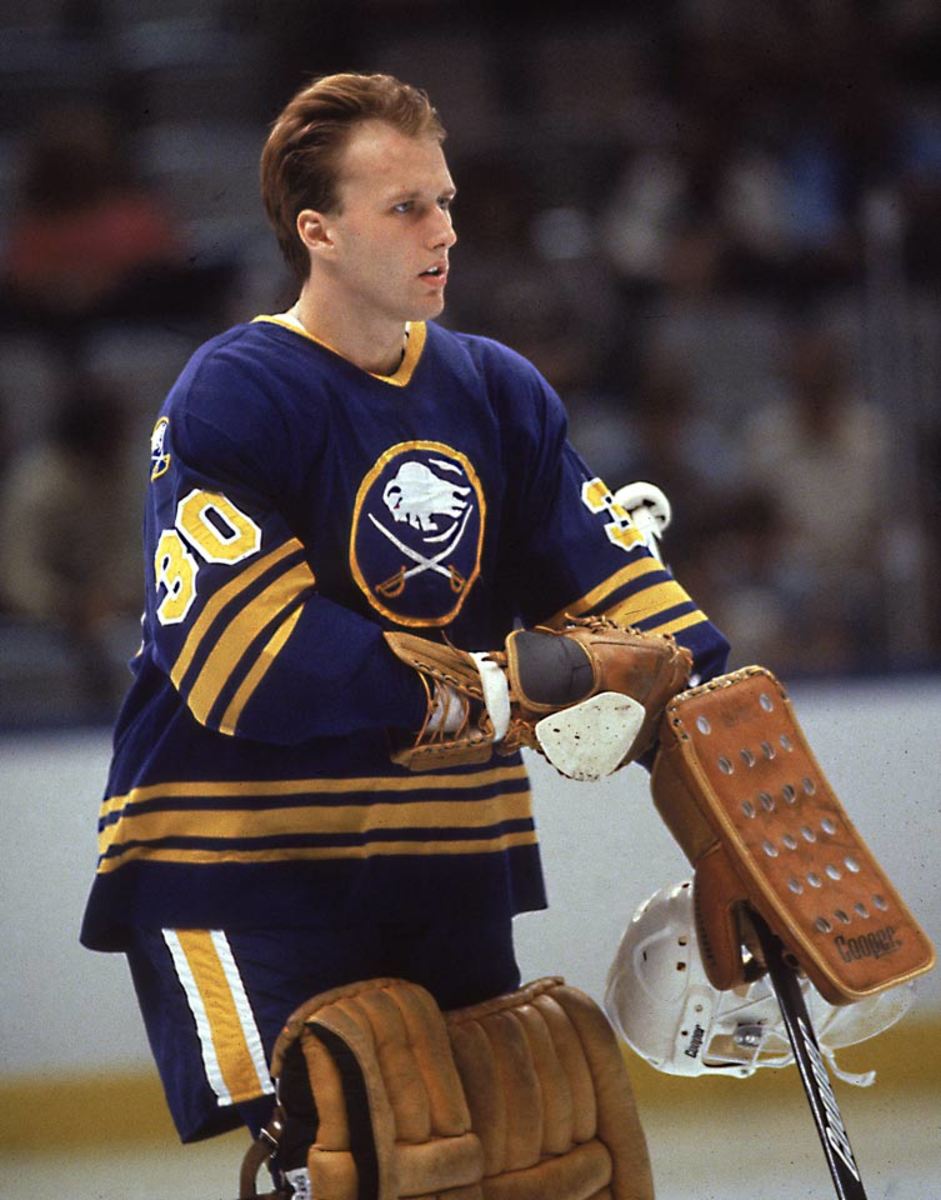
Entering the NHL out of high school, the fifth pick in the ’83 draft became the first goalie to win the Calder since Canadiens legend Ken Dryden in 1972, going 26-12-3, with a 2.84 GAA and .893 save pct. in 42 games. His performance also earned him the Vezina, first team All-Star honors, and a spot on Team USA for the ’84 Canada Cup tournament.
Mario Lemieux, 19, 1984-85
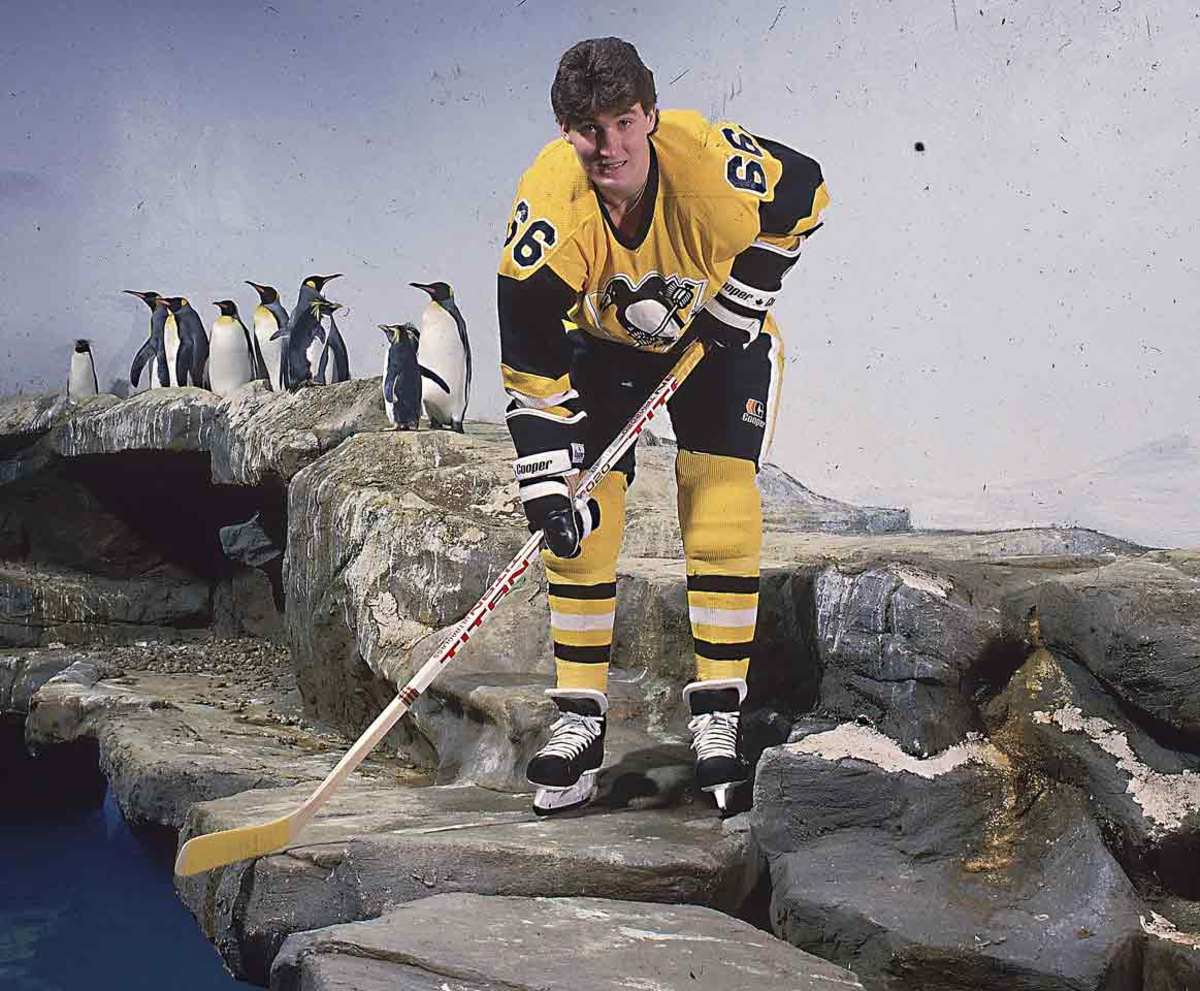
After the towering Super Mario posted a mindblowing 133 goals and 149 assists in his final junior season, it was easy to believe the Penguins tanked to secure the first pick in the ’84 draft. (There was no lottery at the time.) Lemieux scored on his first NHL shift and took the Calder with his 43-57-100 rookie season.
Pat LaFontaine, 19, 1984-85
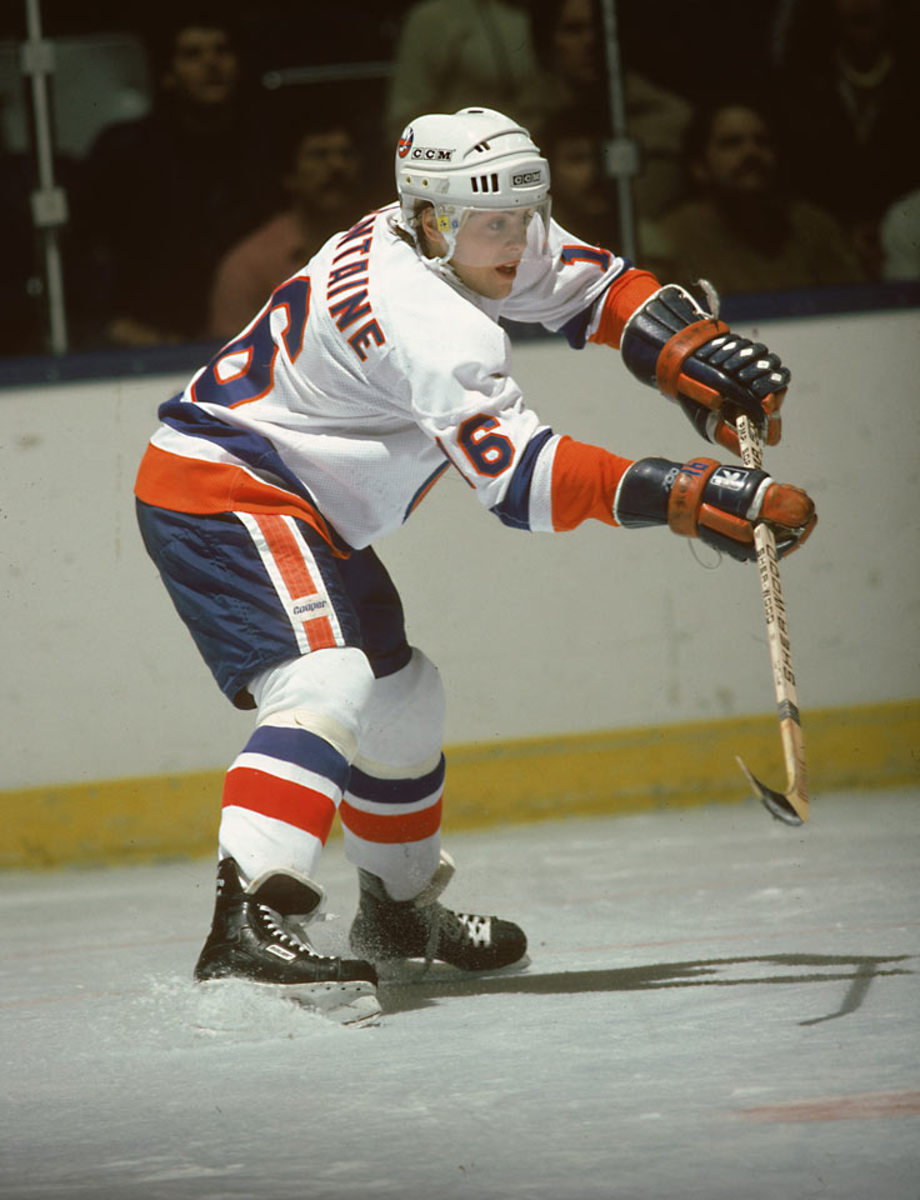
An American out of the QMJHL where he scored 104 goals and 234 points in only 70 games, LaFontaine was drafted third in ‘83. He played for Team USA at the ’84 Olympics before making his NHL debut with 13 goals in 15 late-season games, then helped the Isles reach the Stanley Cup Final. As 19-year-old rookie in ’84-85 he went 19-35-54 in 67 games, going on to a Hall of Fame career that was cut short by concussions.
Jimmy Carson, 18, 1986-87
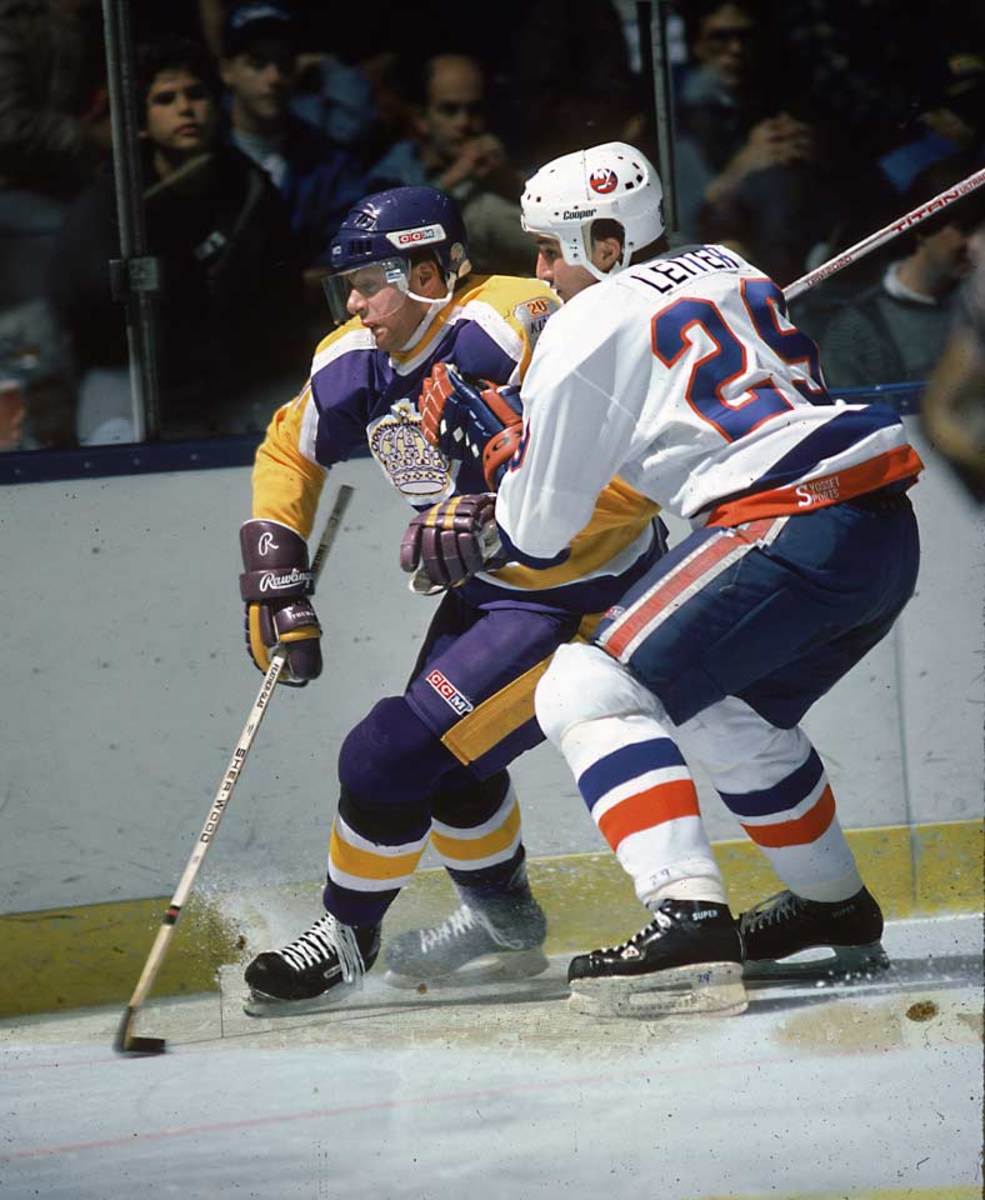
Remembered as the Kings’ key player in their trade for Wayne Gretzky, Carson was the second pick in the '86 draft, after winger Joe Murphy (Detroit). A natural scorer with a mostly one-way game, Carson produced 39 goals and 79 points as a rookie, finishing behind teammate Luc Robitaille and Flyers goalie Ron Hextall in the Calder voting. At 19, he scored 55 goals and 107 points before being dealt. His career was brief, though, and he retired at 29.
Mike Modano, 19, 1989-90
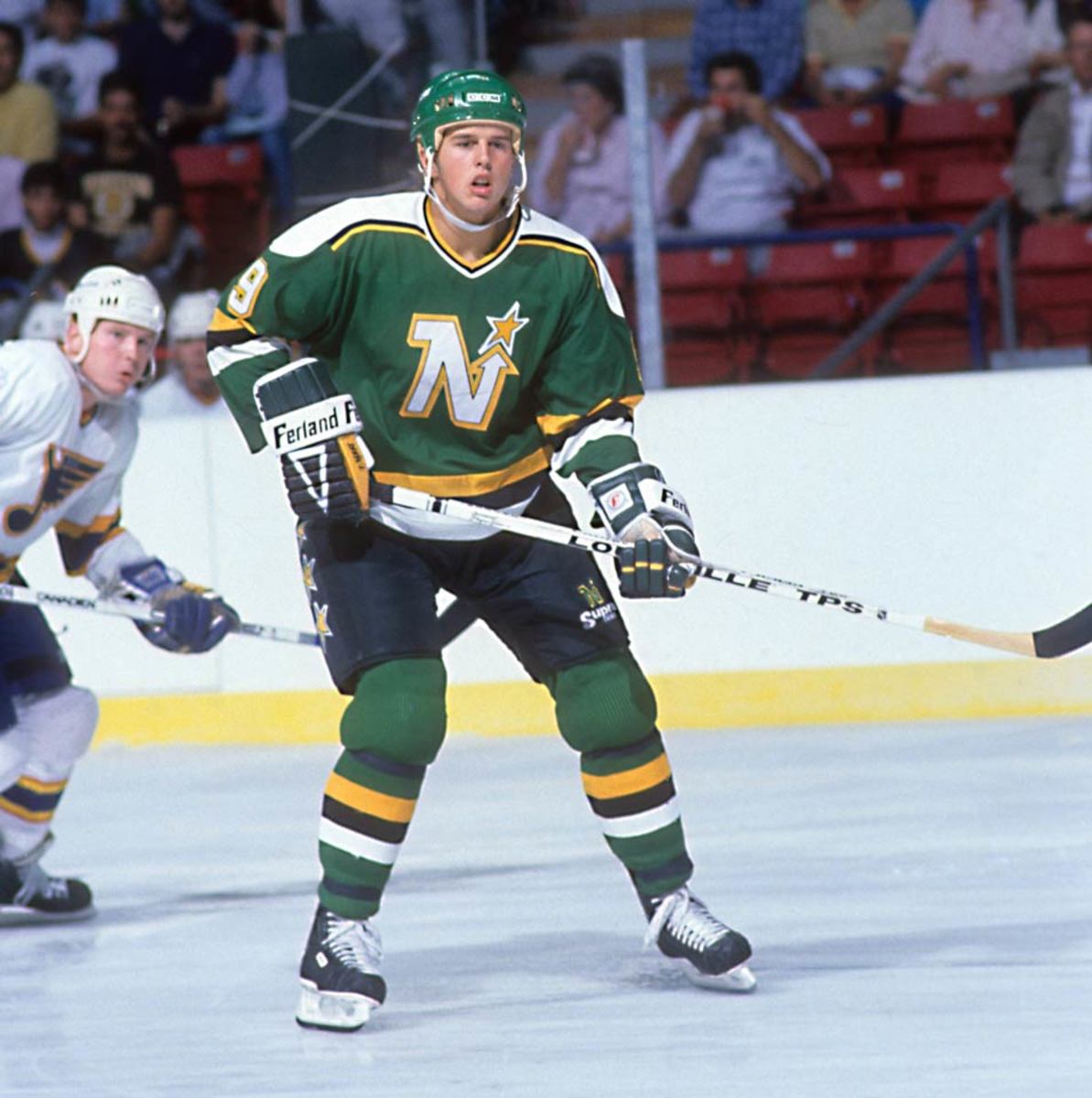
One of the greatest American players of all time, the speedy, explosive center with the lethal shot was the first pick in 1988 out of the WHL and Team USA. Modano made his NHL debut during the 1989 playoffs and then went 29-46-75 the following season, finishing second to 31-year-old Sergei Makarov of the Flames in the Calder voting.
Eric Lindros, 19, 1992-93
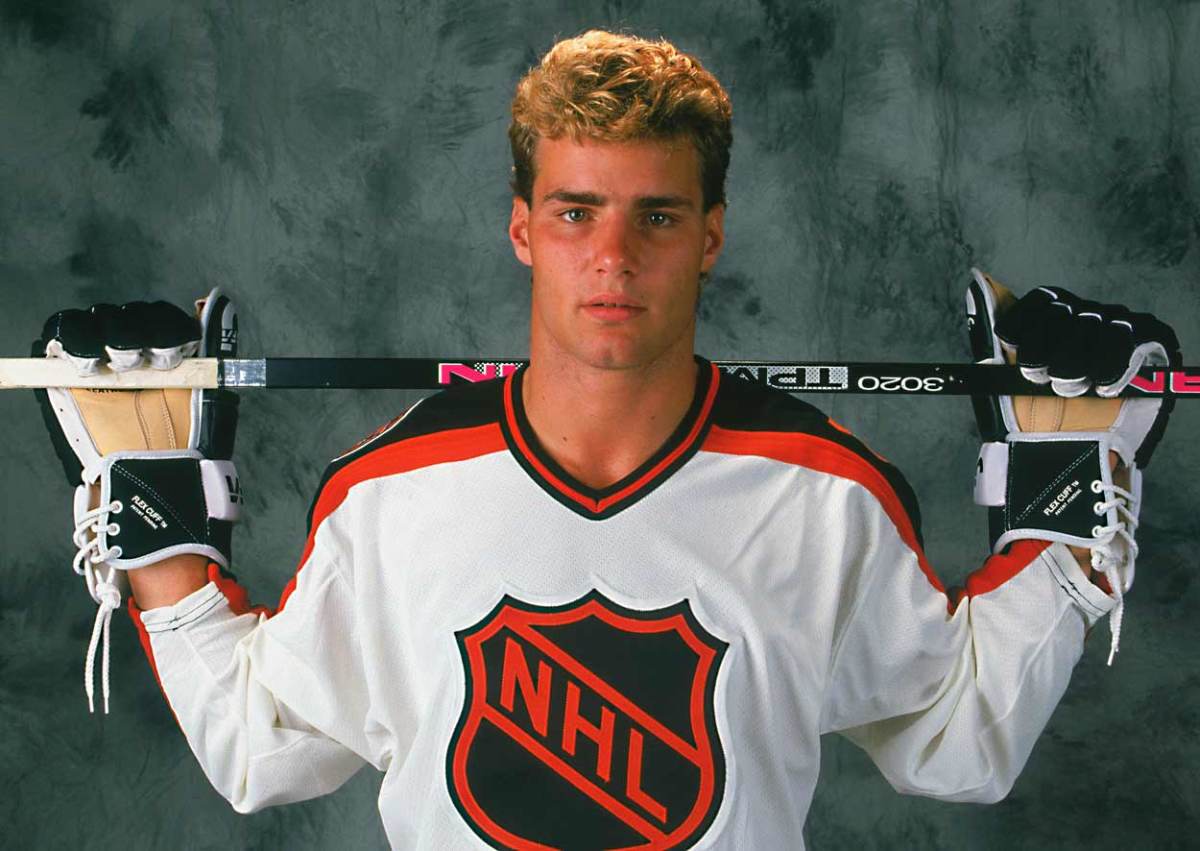
The Next One was a junior superstar when he was chosen first by Quebec in the 1991 draft but infamously fought for the trade to Philadelphia that sent Peter Forsberg and a parcel of players the other way. Big, strong and offensively gifted, Lindros scored 41 goals and 75 points for the Flyers but finished fourth in the Calder vote won by Teemu Selanne who’d set the NHL rookie record of 76 goals with the Jets.
Vincent Lecavalier, 18, 1998-99
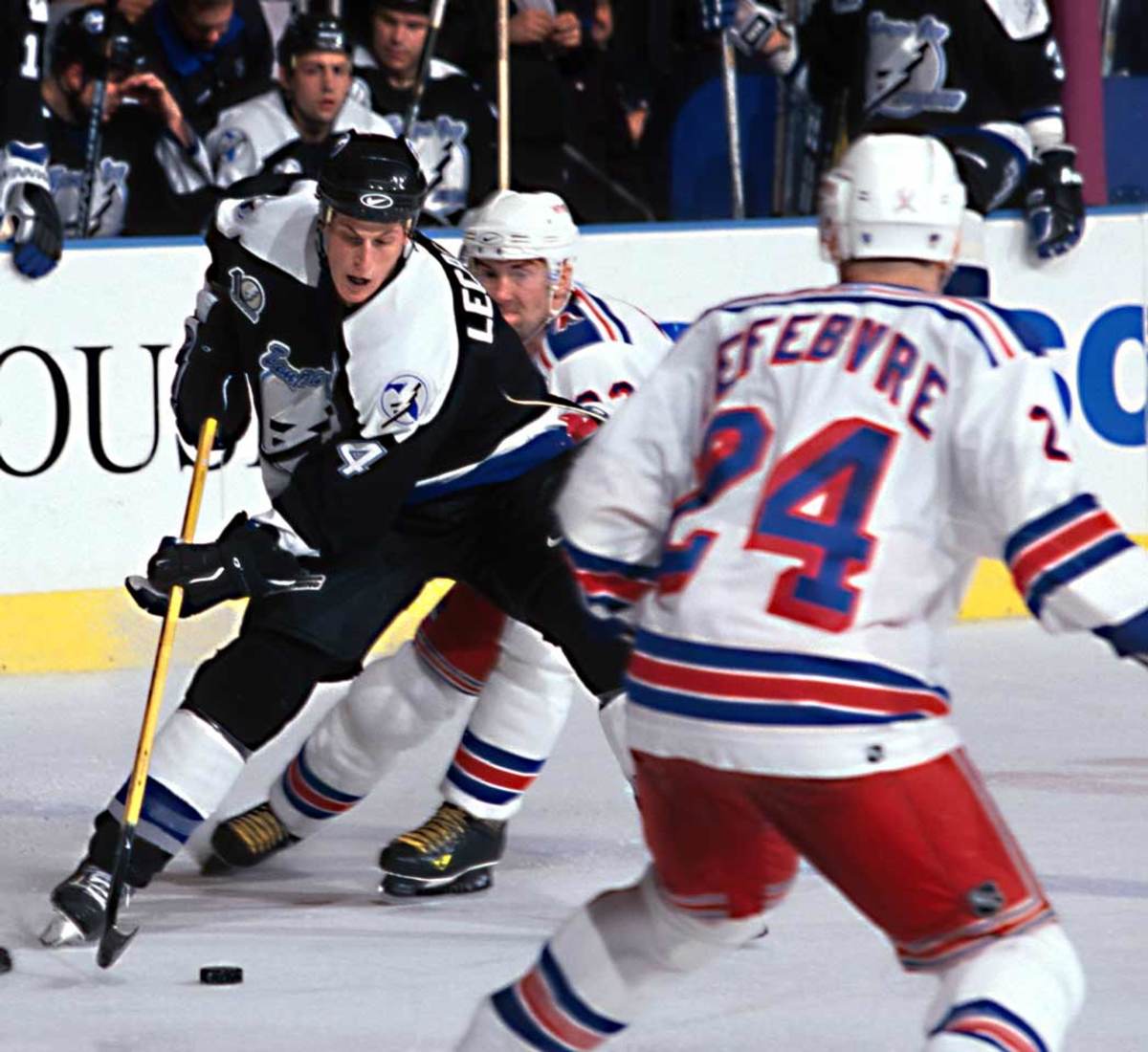
After 86 goals and 217 points in two QMJHL seasons, the speedy, skilled 6’ 4” center was drafted first in 1998 and billed by the Lightning’s owner as a potential Michael Jordan of hockey. Lecavalier had a modest rookie campaign (13-15-28, -19 in 82 games) and was a distant 14th in the Calder voting, but he improved to 25-42-67 the following season and was named the NHL’s first teenaged captain.
Ilya Kovalchuk, 18, 2001-02
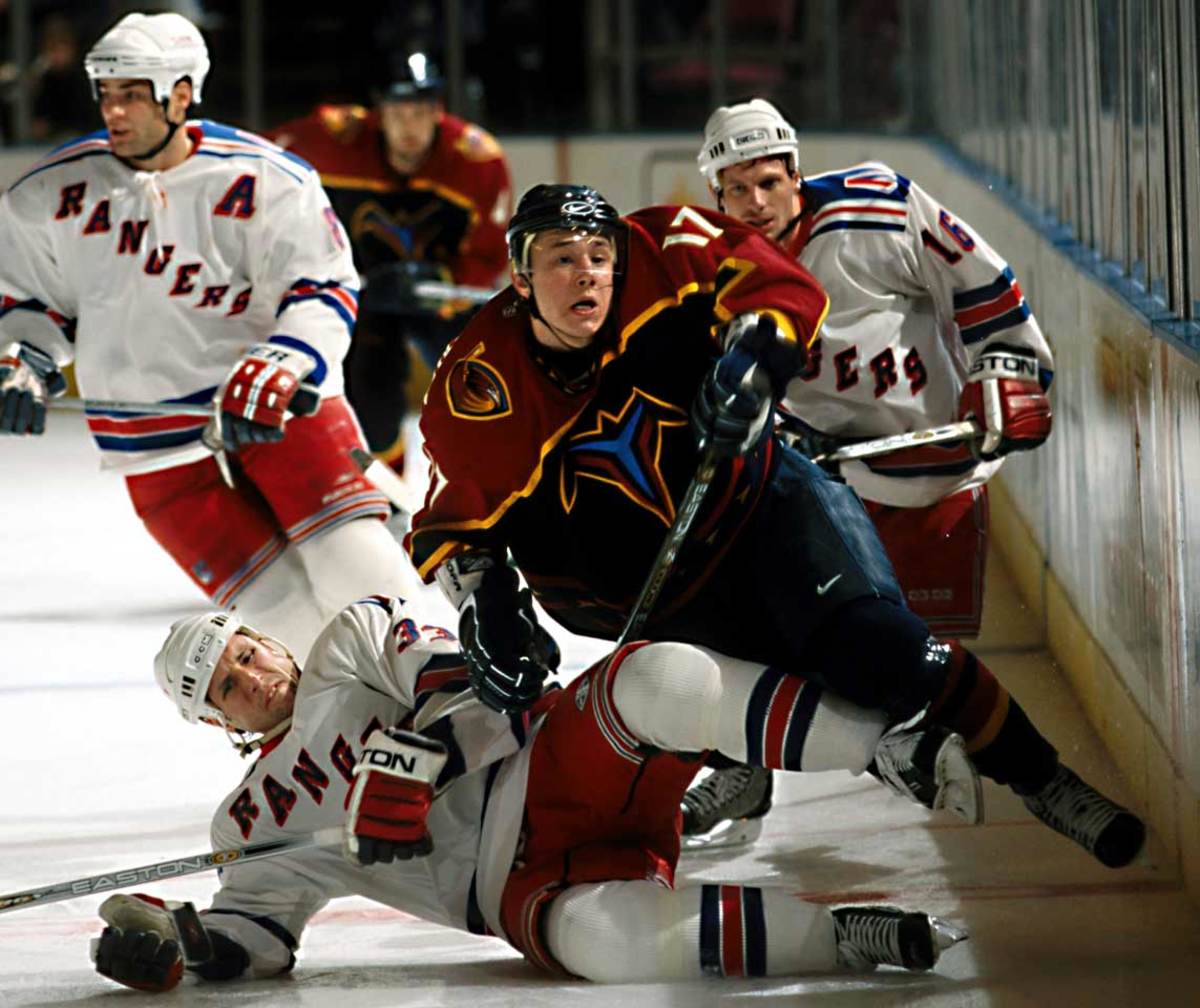
An international star, he was the first Russian ever chosen first in an NHL draft (2001). He went 29-22-51 in 65 games as a rookie but suffered a shoulder injury and finished second in the Calder vote behind Thrashers teammate Dany Heatley, 21. A fast, exceptional puckhandler and explosive scorer, Kovalchuk upped his goal (38) and points (67) totals at 19, setting up a run of six straight 40-plus goal seasons.
Sidney Crosby, 18, 2005-06
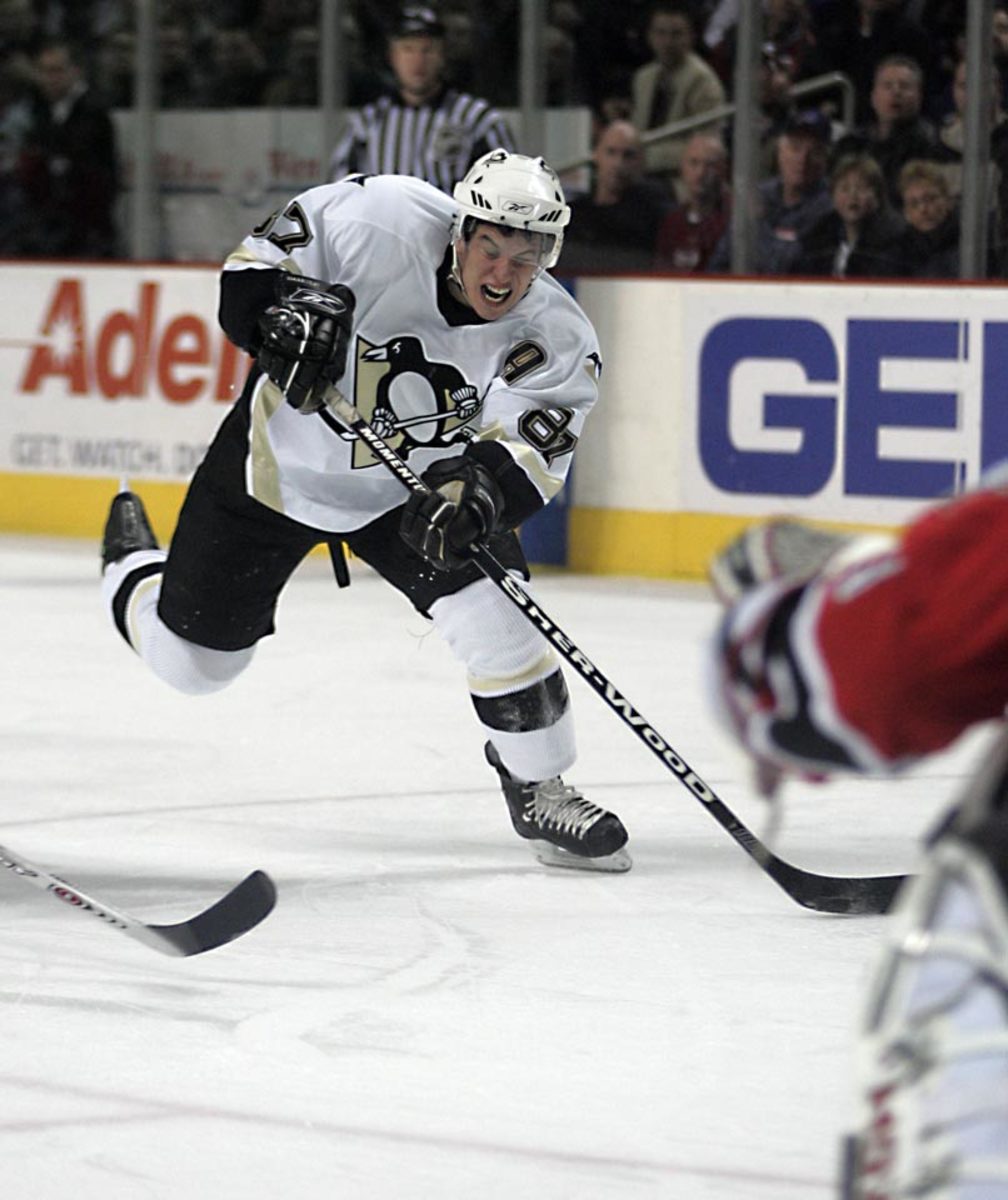
The grand prize in the 2005 lottery, Sid The Kid was a bona fide prodigy who was compared to Wayne Gretzky. Crosby scored 39 goals and 102 points as a rookie but the Calder went to a 20-year-old named Ovechkin. The next season, at 19, Crosby won the Hart, Pearson and Ross trophies with a 36-84-120 slate that made him the youngest NHL scoring champ of all time. He also became the NHL’s second teen captain.
Patrick Kane, 19, 2007-08
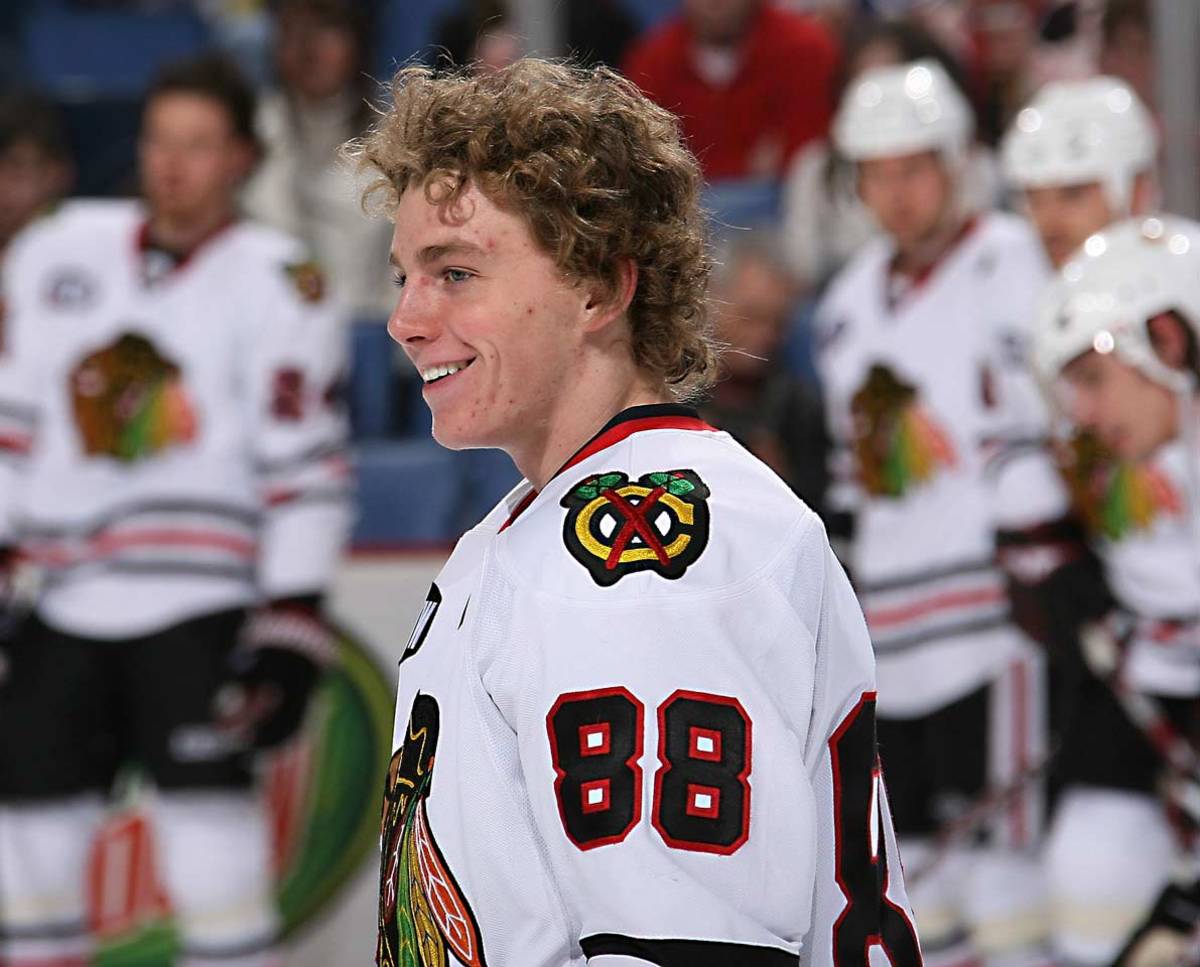
An American stickhandling wizard out of the OHL, Kane was the first pick in the 2007 draft. He dispelled concerns about his size (5’ 9”, 160) by playing in all of Chicago’s 82 games, going 21-51-72 and beating out 19-year-old teammate Jonathan Toews and Washington’s Nicklas Backstrom for the Calder.
Steven Stamkos, 18, 2008-09
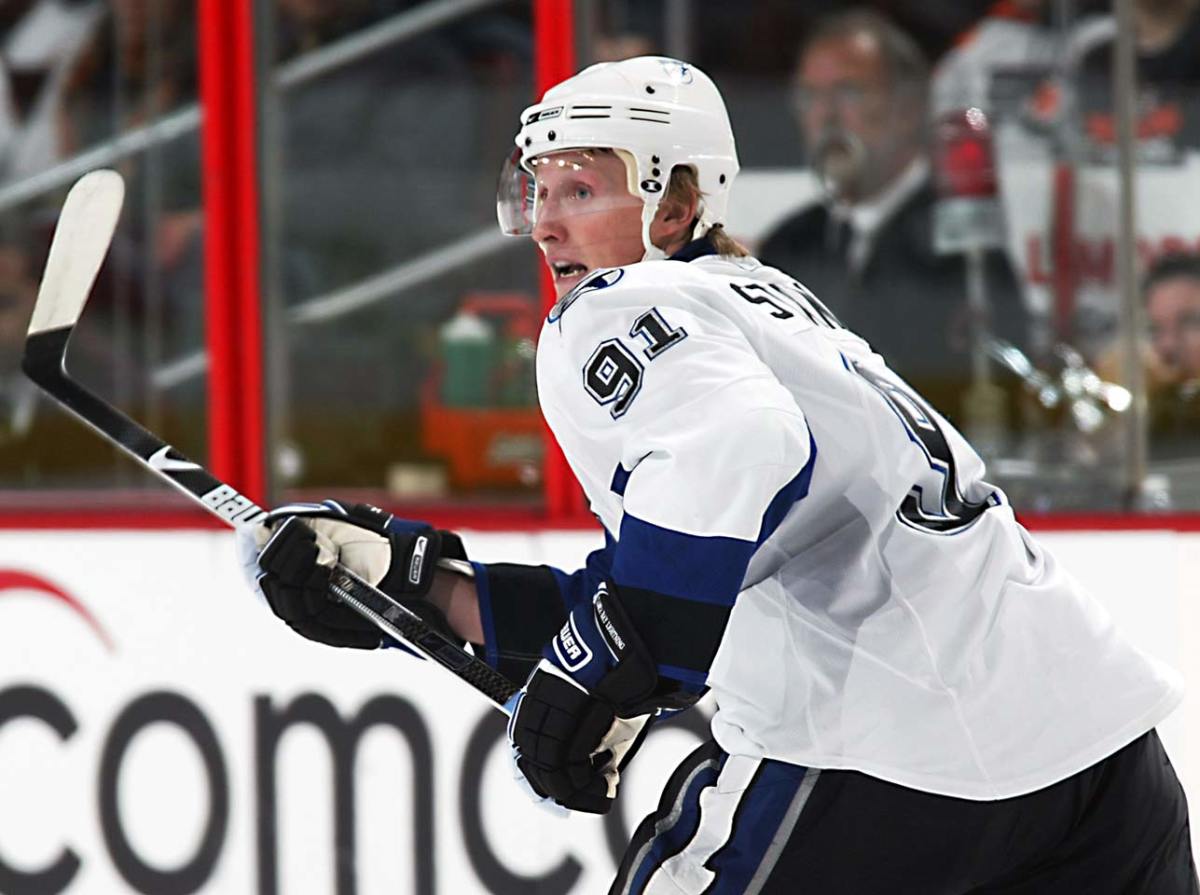
“Seen Stamkos?” the billboards in Tampa asked after the Lightning took the coveted sniper with the first pick in the 2008 draft. His rookie season was solid if unspectacular (23-23-46, -13) and he finished ninth in the Calder voting, but the next season, at 19, Stamkos hit the 50-goal mark, leading the NHL.
John Tavares, 19, 2009-10
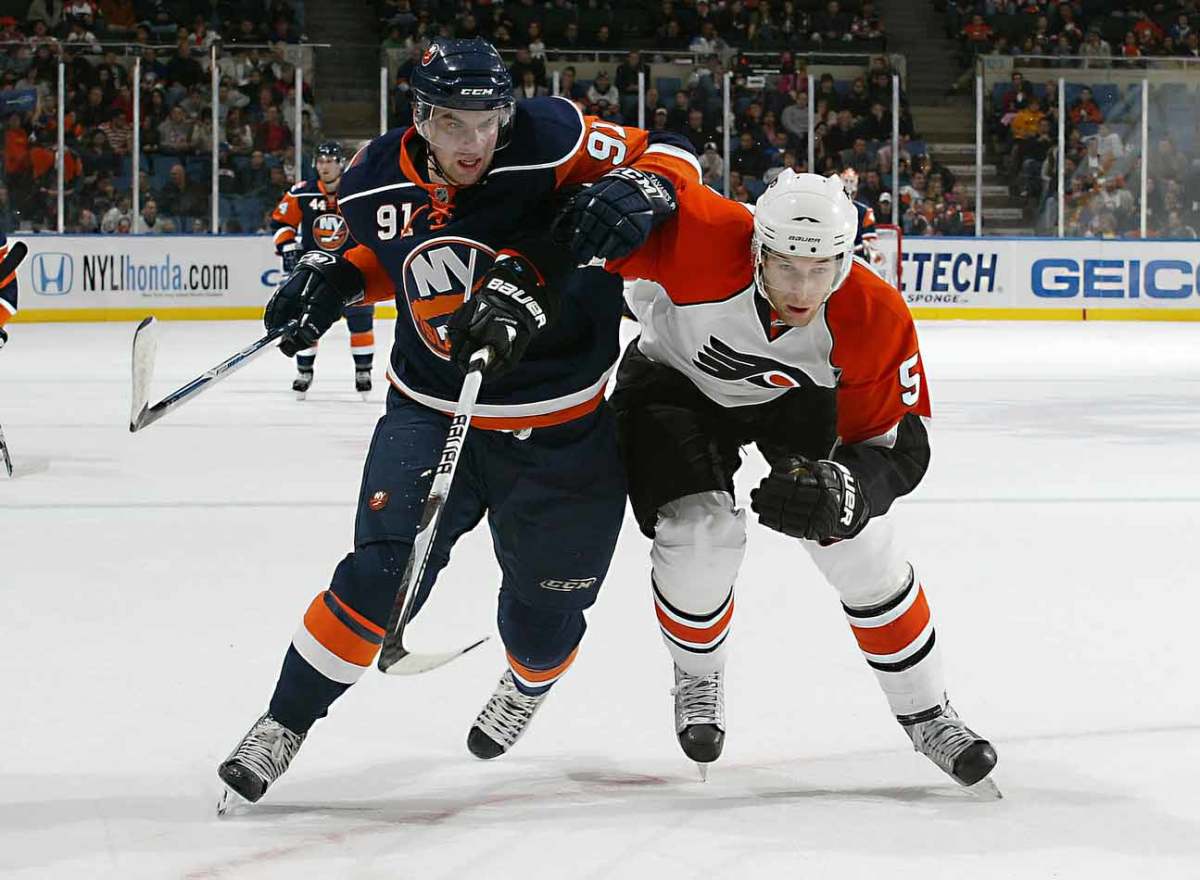
The first player to be given “exceptional” status by the OHL (making him eligible to play a year early at 15), Tavares broke Wayne Gretzky’s league mark for goals by a 16-year-old, with 72. The first pick in the 2009 NHL draft, he went a solid 24-30-54 for the Islanders and finished fifth in the Calder voting won by towering 19-year-old Sabres defenseman Tyler Myers, the 12th selection.
Victor Hedman, 19, 2009-10
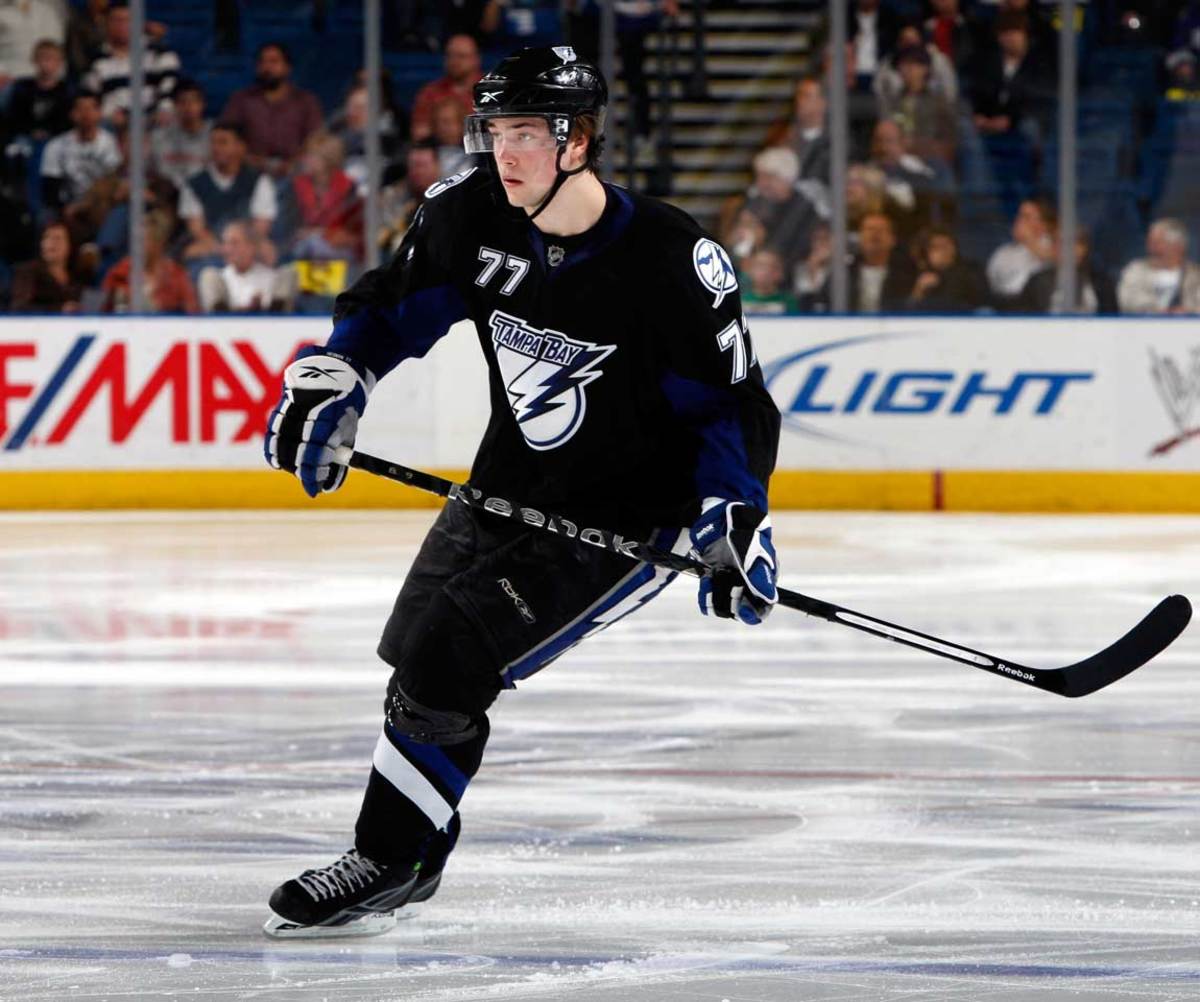
The highly regarded Swedish defenseman was the second pick after John Tavares. Big (6’ 6”, 230) and blessed with all-around skills that invited comparisons to Chris Pronger and Zdeno Chara, he patterned his game after Red Wings great Nicklas Lidstrom. Hedman finished ninth in the Calder voting after a 4-16-20, -3 rookie campaign and needed several seasons to mature into the star and cornerstone everyone expected he would become.
Taylor Hall, 19, 2010-11
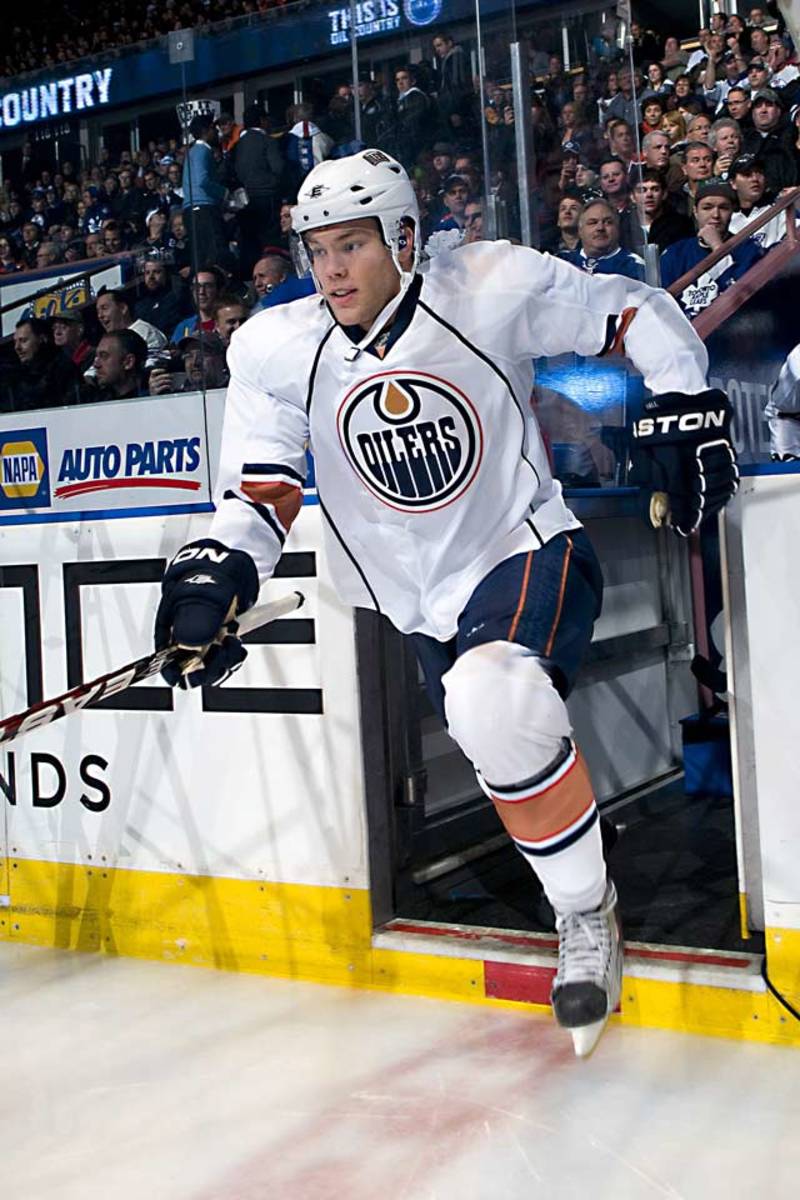
The big question on draft night 2010 was Taylor or Tyler (Seguin)? Hall, the big, speedy winger who’d posted 106 points in 57 OHL games, was the first pick. He went 22-20-42 in 65 games with struggling, rebuilding Edmonton, his season ended by an ankle sprain in March. The Calder was won by Carolina’s 18-year-old Jeff Skinner (31-32-63), the seventh overall pick.
Tyler Seguin, 19, 2010-11
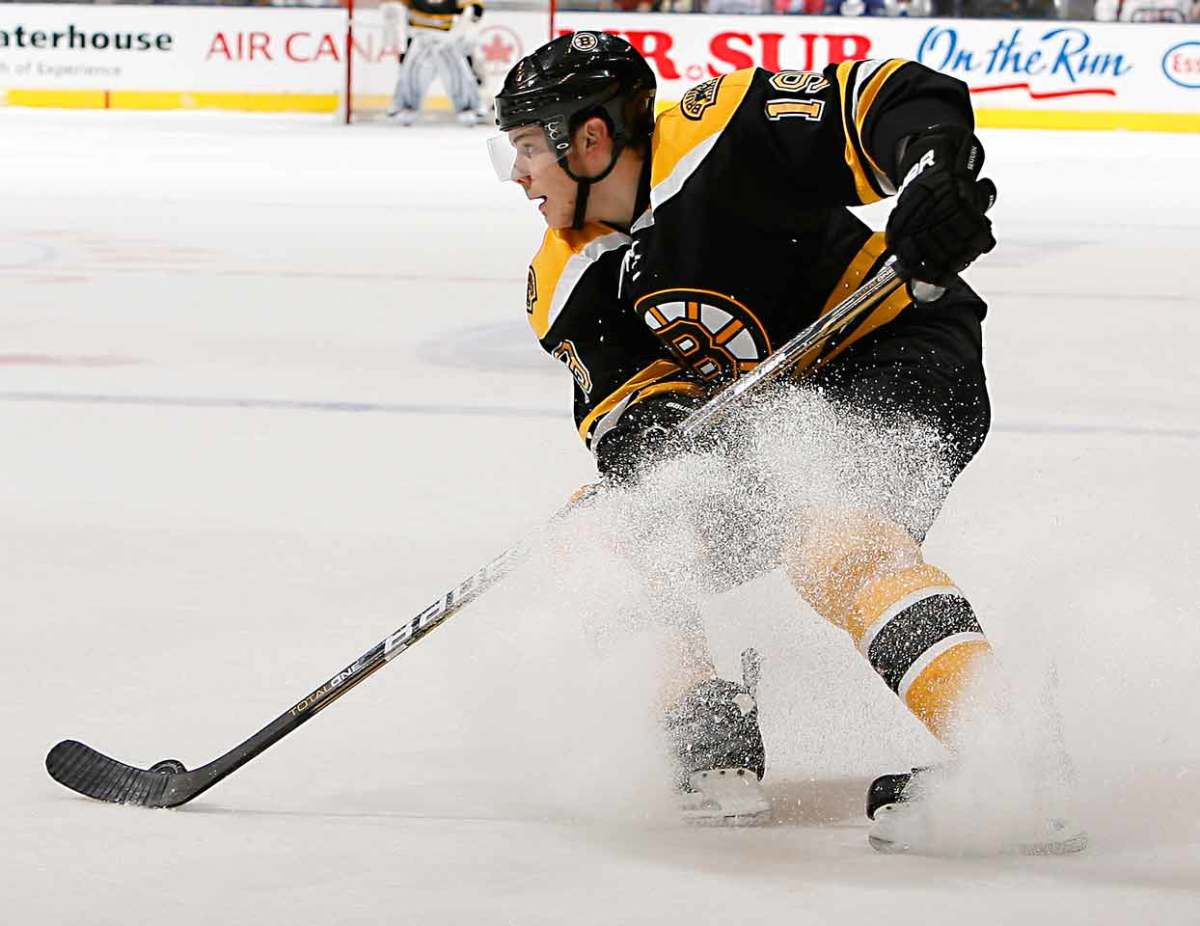
The OHL MVP was the second pick in the 2010 draft. A creative playmaker and scorer with a defensive upside, Seguin put up modest numbers (11-11-22 in 74 games) under the weight of great expectations, received no Calder votes and spent Boston’s first 11 postseason games as a healthy scratch. When he saw action, he became the first teen to score four points in a playoff match (Eastern final Game 2 vs. Tampa Bay).
Ryan Nugent-Hopkins, 18, 2011-12
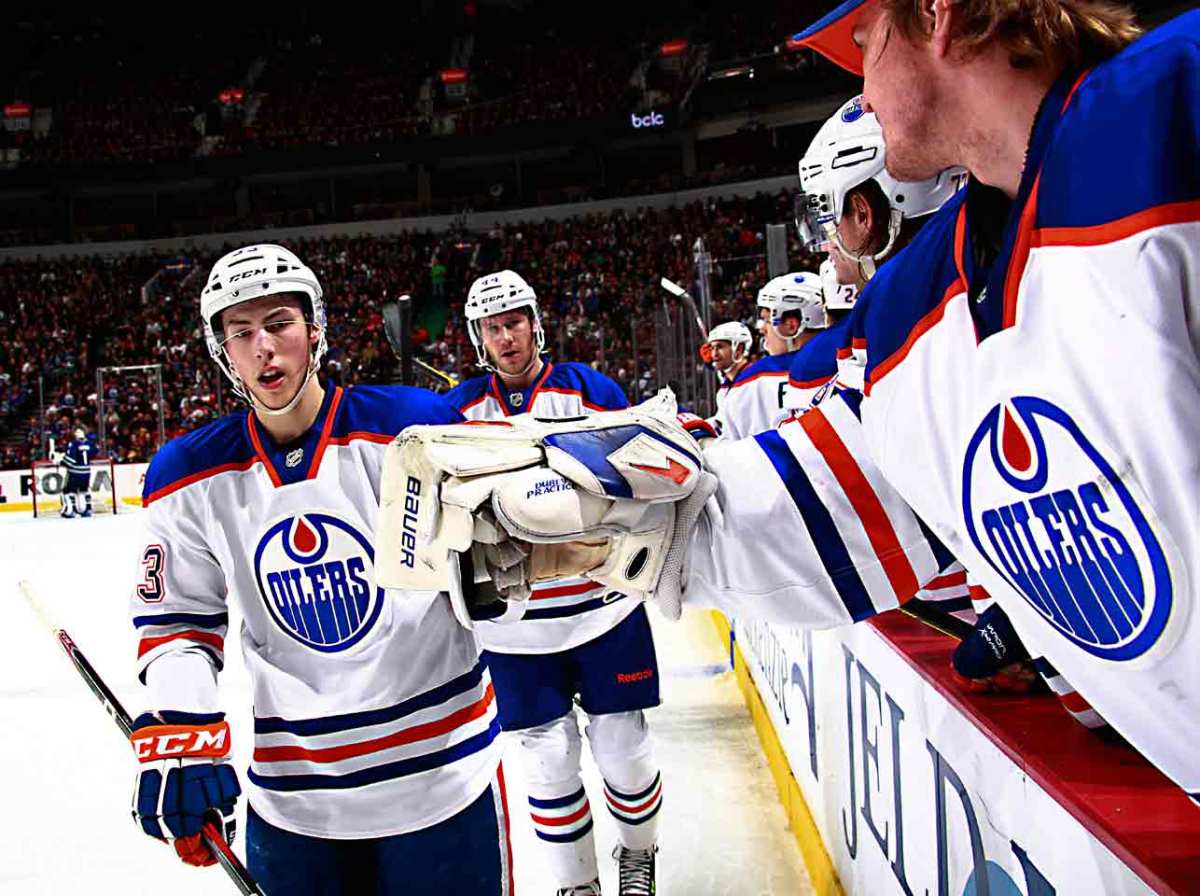
A deft playmaker, the top pick of 2011 tied for first in rookie scoring (18-34-52 in 62 games) but finished second behind Colorado’s Gabriel Landeskog, 19, for the Calder, only the third time teens were 1-2 in the voting, and first since Bryan Berard and Jarome Iginla in ’97. Three others earned votes: Hurricanes defenseman Justin Faulk, 19, Flyers center Sean Couturier, 19, and Devils blueliner Adam Larsson, 19.
Gabriel Landeskog, 19, 2011-12
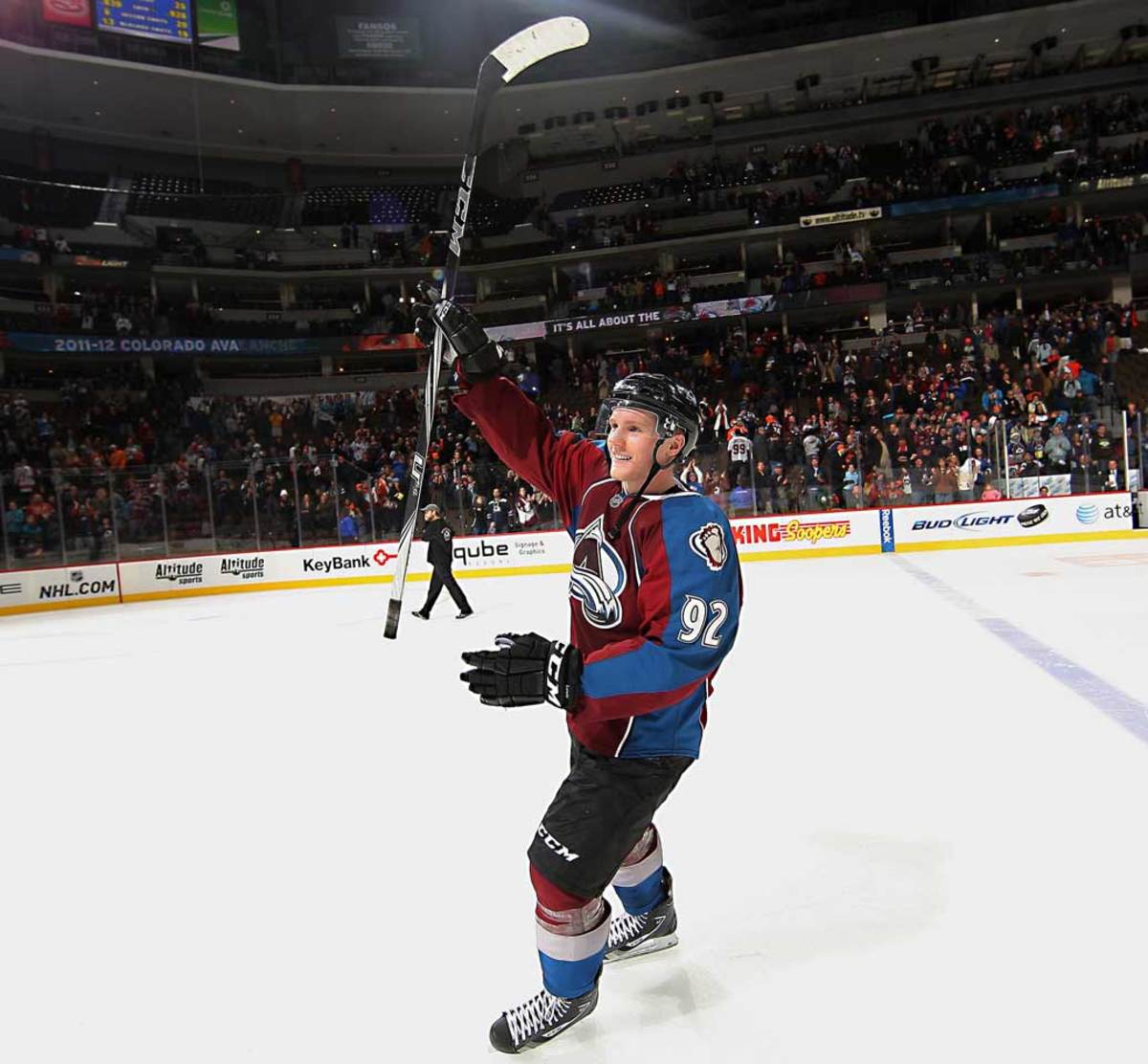
A natural leader, the calm, skilled winger who captained Sweden’s U-16, U-17 and U-18 teams was the second pick in 2011 draft. The only member of his rookie class to play all of his team’s 82 regular season games, he won the Calder by going 22-30-52 with a stellar +20 rating. The Avs then made him the youngest player in NHL history to wear the C.
Nathan MacKinnon, 18, 2013-14
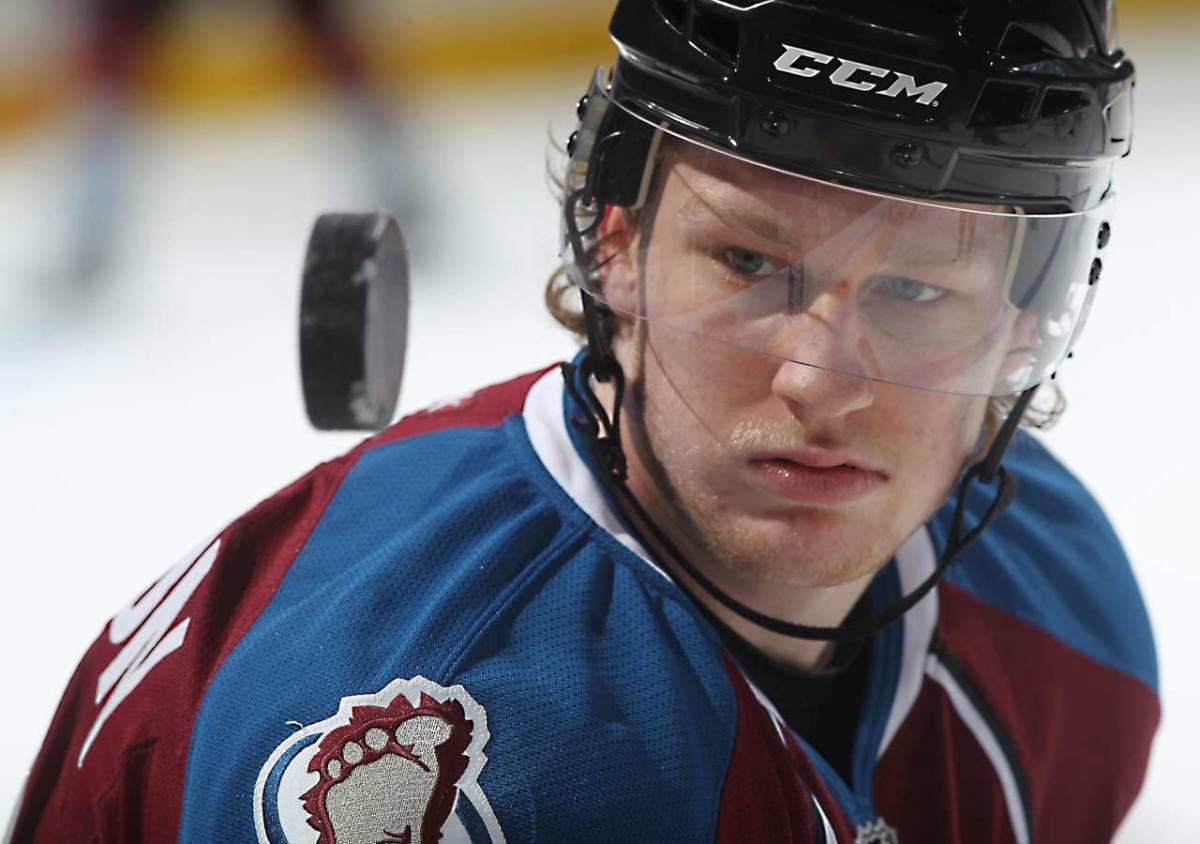
From Sidney Crosby’s hometown of Cole Harbour, Nova Scotia, MacKinnon was the first top pick out of the QMJHL since Crosby in 2005. Playing wing and center, this skilled scorer with great hands and solid two-way game won the 2014 Calder with a 24-39-63, +20 season, beating out two of Tampa Bay’s Triplets: Ondrej Palat (22) and Tyler Johnson (23). But at 19, he suffered a sophomore slump and was sidelined by a broken foot, his production declining to 14-24-38, -7.
Seth Jones, 19, 2013-14
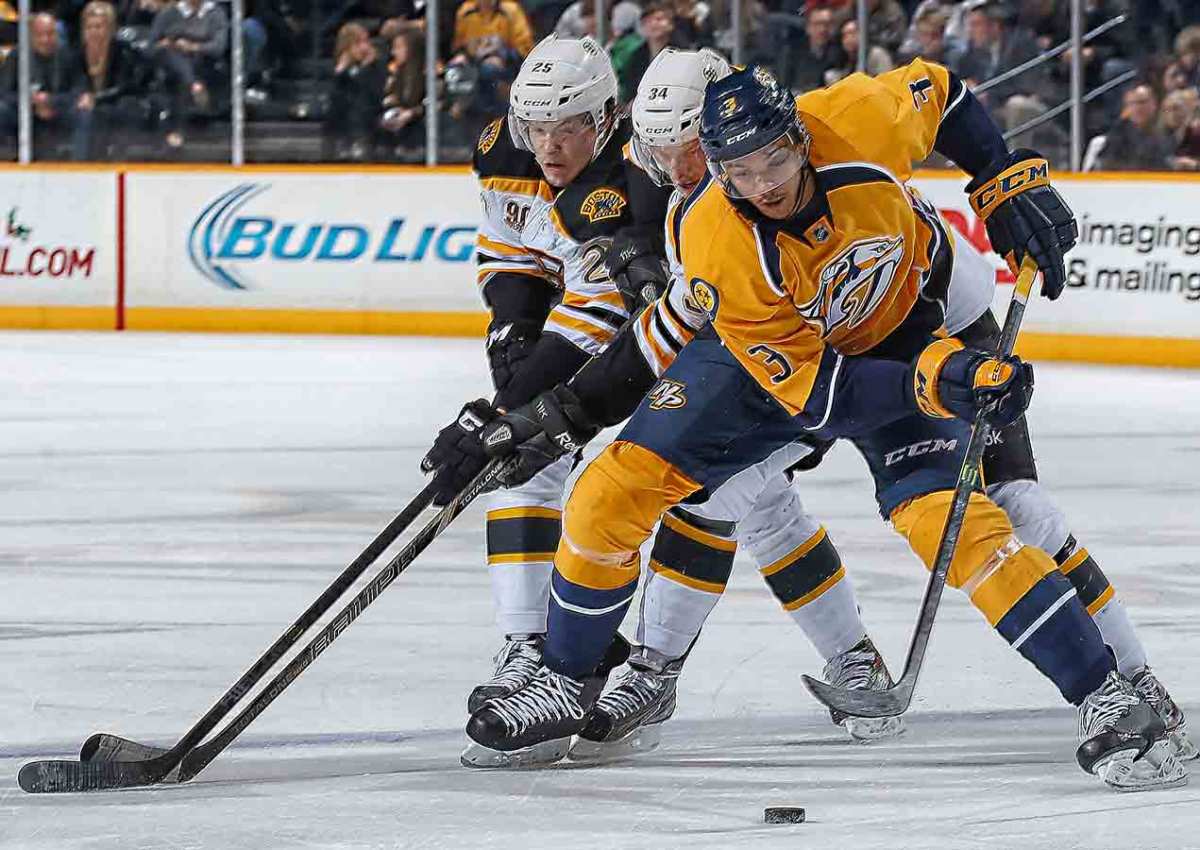
The celebrated son of ex-NBA player Popeye Jones looked like the possible No. 1 pick of 2013 before falling to No. 4 behind Nathan MacKinnon (Colorado), Aleksander Barkov (Florida) and Jonathan Drouin (Tampa Bay). A big (6’ 4’, 205), athletic blueliner, Jones went 6-19-25, -23 as a rookie while adjusting to his difficult position at the NHL level, earning 15 Calder votes (11th).
Aaron Ekblad, 18, 2014-15
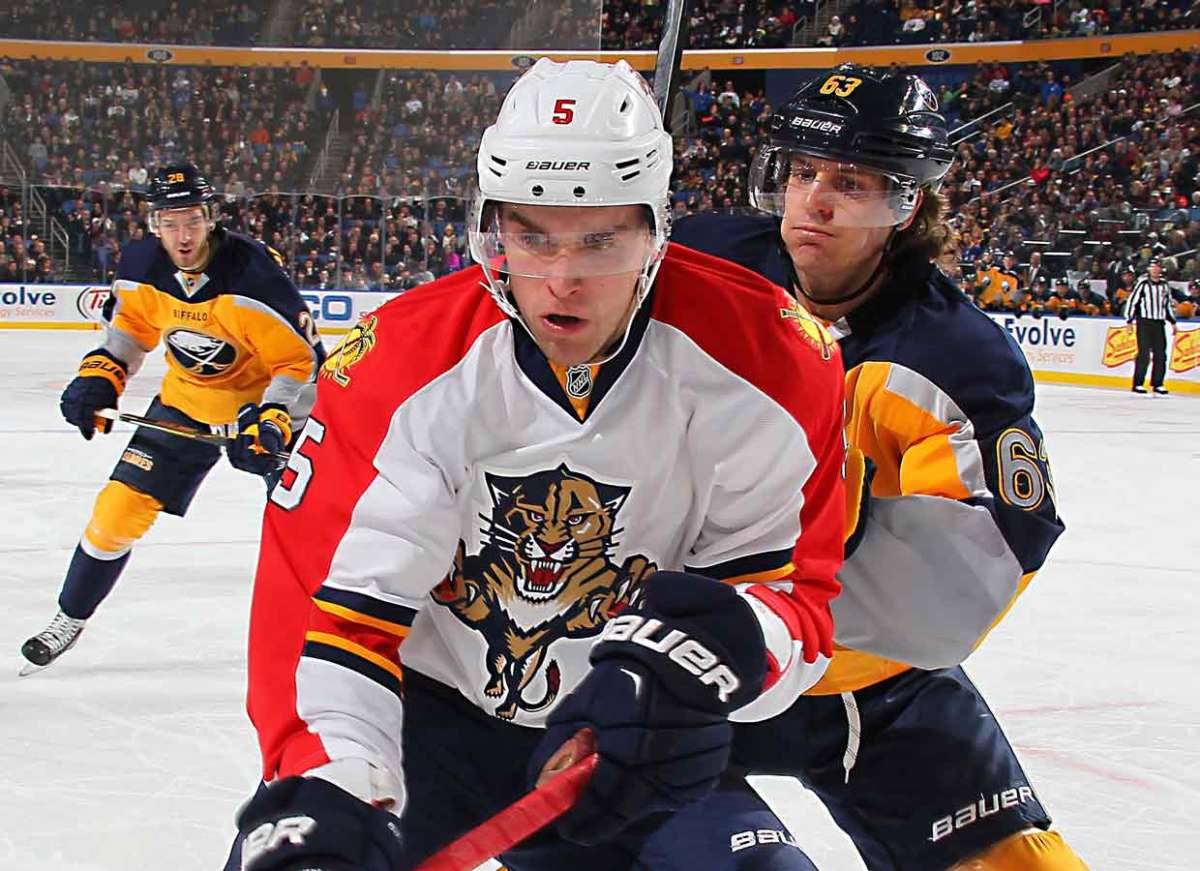
The second player to be given “exceptional” status by the OHL, and second defenseman since 1996 to be the NHL’s top pick, the uncannily mature Ekblad made a seamless transition, winning the Calder with 12-27-39, +12 rookie season. His 39 points were two shy of Bobby Orr’s NHL record for an 18-year-old blueliner and his offensive totals were all team rookie marks.
Connor McDavid and Jack Eichel
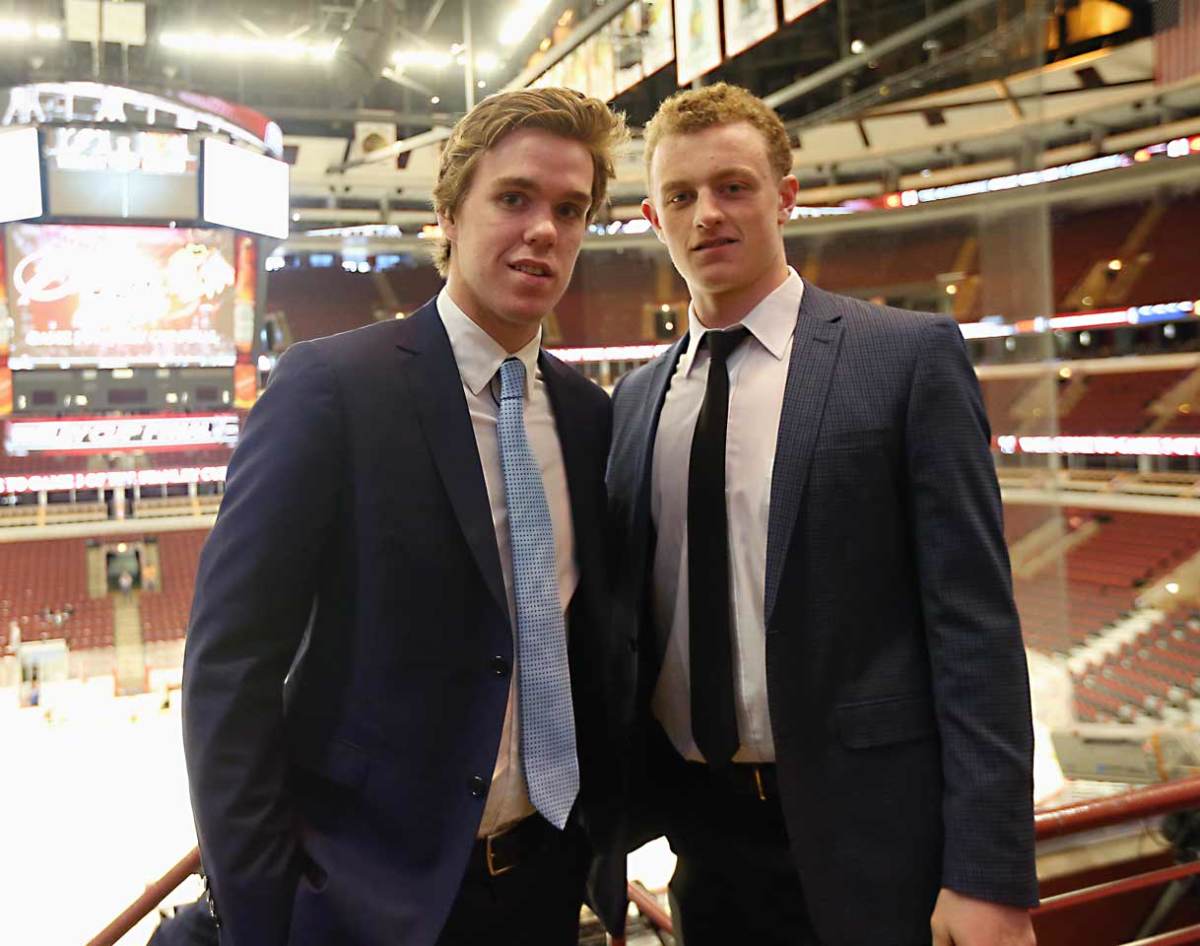
The two 18-year-old centers were so highly coveted ahead of the 2015 NHL Draft that teams were suspected to tanking in order to increase their chances of winning the lottery. McDavid, an OHL scoring sensation taken No. 1 by Edmonton, inspired Hall of Famer Dale Hawerchuk to say, “He skates like Bobby Orr. He has the vision of Wayne Gretzky. And he handles the puck like Mario Lemieux.” An NHL scout said of Boston University standout Eichel, who went No. 2 to Buffalo, “It’s not just his speed; it’s his skill, his hockey sense. It doesn’t even look like he’s trying, but the puck comes to him. He makes things happen.”
6. Kale Clague, Brandon Wheat Kings (WHL)
There's a reservation to the way scouts speak about Clague that suggests they might be trying to mask their enthusiasm. Not that anyone's going to overlook him at this point.
Klague is a classic mid-sized (6-feet, 190 pounds) defender who thinks offense first. He's a powerful skater with slick hands and a creative mindset. He has a heavy shot from the point, but he's just as likely to venture deeper into the zone if the opportunity presents itself.
• Much movement in Central Scouting’s new 2016 NHL draft rankings
He's made huge strides in his own zone, playing a feisty game that belies his stature. He probably won't drop the gloves much in the NHL, but that willingness says something about the price he'll pay for his team.
7. Logan Stanley, Windsor Spitfires (OHL)
Stanley is a massive physical specimen, standing 6'7" and weighing 225 pounds. He earns his keep in his own end with some surprisingly agile feet, a relentless physical game and a startling wingspan that makes it difficult for opposing shooters to get pucks or bodies past him. “Good luck beating him one-on-one,” a scout said.
A team looking for a shutdown defender would be thrilled to land him, but he has some offensive upside as well.
• Roenick: NHL is looking for Connor McDavid to become the next Gretzky
8. Charles McAvoy, Boston University (NCAA)
A 6-foot, 199-pound right-shot defender, McAvoy generates some mixed reactions. Most scouts are impressed by his transition skills and hockey sense. “He's ideal for today's game,” one said. “He moves the puck quickly and efficiently and is rarely rattled under pressure.”
Others have expressed concerns about the rising sophomore, who notched three goals and 25 points in 37 games as a freshman. “I'm not sold on his skating,” said one. “And there's a higher element of risk to his game than with some others in his class.”
The overall sense: There's something there, and if he works on his mobility, the reward might be worth the risks.
• VAULT: ‘Can’t Miss Kid’ Carpenter destined for stardom
9. Dennis Cholowski, Chilliwack Chiefs (BCHL)
A strong 200-foot player who, like most at the top of this class, is at his best in the offensive zone (12-28-40) where his agility, creativity and puck skills make him a dangerous weapon. But he's a smart positional player as well, who assesses the play quickly and takes away time and space effectively. Once he puts some weight onto his 6'1" frame, he could be a solid second-pair option.
The SI Extra Newsletter Get the best of Sports Illustrated delivered right to your inbox
Subscribe
10. Libor Hajek, Saskatoon Blades (WHL)
Although he played heavy minutes in every situation as a rookie with a weak Blades side, Hajek is at his best in his own end. He keeps it simple, playing a smart, positionally sound game. He likes to play physical, but knows when he can go for the hit and when he needs to stay in his line.
He's the sort to lead the rush, but he makes a good outlet pass and can get a heavy shot off from the point.
Given time, he'll mature into a reliable second-pair option.
